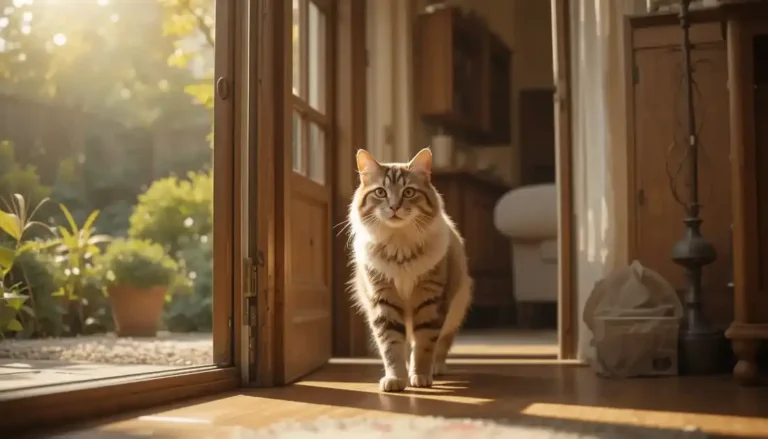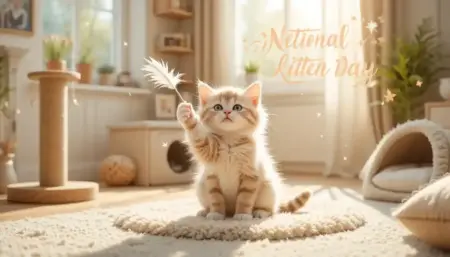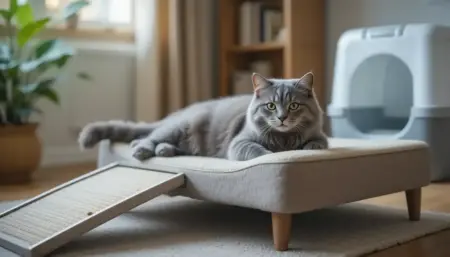To transition an outdoor cat to indoor life, start with a veterinary check, secure your home, and gradually expand the cat’s space while providing enrichment.
This 7‑day plan offers a step‑by‑step framework for a safe, stress‑free Transition An Outdoor Cat to Indoor living, giving both you and your feline a smoother adjustment.
Why Transition An Outdoor Cat to Indoor Matters?
- Safety first – indoor cats avoid traffic, predators, poisons, and parasites.
- Health benefits – reduced risk of infection, injury, and parasitic disease.
- Longevity – indoor cats often live 2–4 years longer than their outdoor counterparts.
- Peace of mind – you can monitor nutrition, behavior, and medical needs more closely.
A well‑planned Transition An Outdoor Cat to Indoor program protects your pet without ignoring its instincts.
Overview of the 7‑Day Transition Blueprint
| Day | Focus | Goal |
|---|---|---|
| 1 | Vet check & home safety | Establish a healthy baseline and a cat‑proof environment. |
| 2‑3 | Controlled confinement & litter training | Build confidence in a limited, secure space. |
| 4‑5 | Enrichment & mental stimulation | Replace outdoor hunting and roaming with engaging indoor activities. |
| 6 | Routine & positive reinforcement | Cement good habits and reward indoor‑friendly behavior. |
| 7 | Gradual house freedom & long‑term success | Expand territory responsibly while preventing escape. |
Each step of the Transition An Outdoor Cat to Indoor plan is designed to respect feline physiology and keep stress levels low.
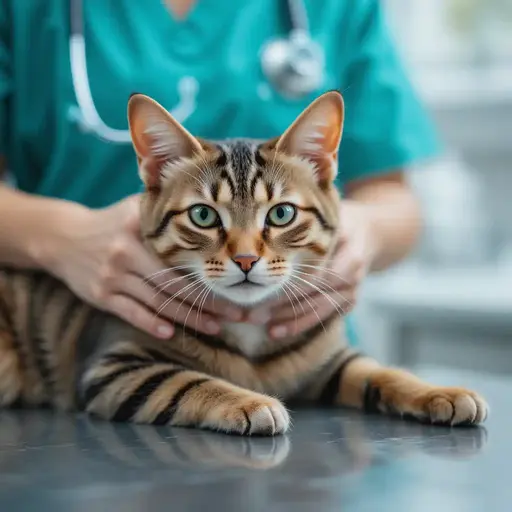
Day 1 – Vet Check and Home Safety
Vet Check: The Non‑Negotiable First Step
A comprehensive exam is the cornerstone of any successful Transition An Outdoor Cat to Indoor effort.
- Vaccinations – update rabies, FVRCP, and consider FeLV/FIV testing.
- Parasite screening – fecal exams for worms, skin scrapes for mites, and blood work for hidden infections.
- Microchip verification – ensure the chip is active and information is current.
Why it matters: More than half of outdoor cats carry intestinal parasites that can flare under stress. Early detection prevents health crises later in the transition.
Home Safety Audit
Outdoor‑savvy cats view every opening as a possible escape route. Secure the house before confinement.
| Area | Safety Action |
|---|---|
| Windows | Install pet‑rated window guards; replace flimsy screens. |
| Doors | Add secondary locks or a baby gate on exterior doors; keep screen doors latched at all times. |
| Plants | Remove toxic species such as lilies, sago palms, and oleander. |
| Furniture & Fixtures | Anchor heavy shelves; cover cords to prevent chewing. |
Pro tip: Place a scratching post or a piece of sisal rope near each exit. It satisfies territorial marking while signaling that the area is “owned” by the cat.
Days 2‑3 – Controlled Confinement & Litter Training
Choose the Right Starter Room
A quiet, low‑traffic room reduces overstimulation. Look for three essential features:
- Vertical territory – a cat tree or wall‑mounted shelves near a window.
- Hiding options – covered beds, cardboard boxes, or a faux cave placed away from doorways.
- Sensory anchors – a window view of the garden or a familiar outdoor scent (e.g., a leaf bundle you collected).
Research note: Cats with accessible hideaways show a 40 % reduction in cortisol during environmental changes (Journal of Feline Medicine, 2022).
Litter Box Introduction
Outdoor cats are used to digging in soil, so the litter must emulate that texture.
| Litter Type | Acceptance Rate | Why It Works |
|---|---|---|
| Unscented clay | 68 % | Fine texture mimics earth. |
| Paper pellets | 52 % | Soft, low‑dust, easy on paws. |
| Sand/gritty | 31 % | Triggers a digging instinct, but can be messy. |
Training steps (numbered):
- Place the box away from food and water bowls.
- Add a small amount of garden soil (1 part soil to 3 parts litter) for the first 48 hours.
- Reward investigation immediately with a tiny treat—before elimination.
- Observe behavior: If the cat sniffs, paws, or circles, praise verbally.
- Gradually phase out soil over the next 2 days, moving to all‑clay litter.
Stress signals to watch: excessive grooming, tail flicking near the box, or lingering at the doorway. Adjust the box location or litter type instead of forcing use.
Managing Escape Urges
Even in confinement, an outdoor‑trained cat will test doors.
- Create a “door buffer”: a small vestibule of a freestanding mesh panel with a perch.
- Use pheromone diffusers (e.g., Feliway) placed 3 feet above the floor to calm the cat’s Jacobson’s organ.
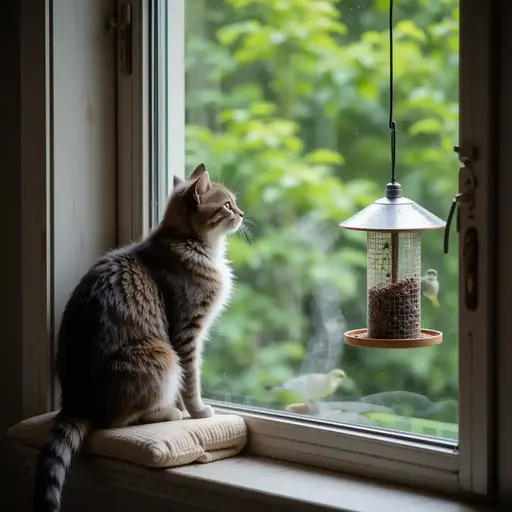
Days 4‑5 – Enrichment & Mental Stimulation
Outdoor cats spend 3–5 hours daily hunting, climbing, and exploring. Replace those opportunities with indoor equivalents.
Hunting‑Style Toys
A complete predatory sequence keeps the cat satisfied.
| Toy Type | How It Works |
|---|---|
| Puzzle feeders | Release kibble slowly, requiring paw manipulation. |
| Wand toys with erratic motion | Mimic bird flight; short 90‑second bursts match natural chase length. |
| Timed treat dispensers | Deliver small meals randomly, simulating unpredictable prey. |
Science tip: Cats using progressive puzzle systems vocalize 63 % less stress‑related meowing by Day 5 (Journal of Feline Medicine).
Window Perches and Bird Feeders
Viewing wildlife satisfies the hunter’s eye without the kill.
- Perch placement: east‑facing windows for morning sun; mount securely with brackets.
- Feeder distance: Place bird feeders 10–15 feet away to avoid frustration.
- Safety: Cover the exterior with clear acrylic to protect birds from cat attacks.
DIY Enrichment Hacks (under $10)
- Toilet‑paper tube puzzle – cut slits, insert kibble, tape ends.
- Frozen broth cubes – low‑sodium broth with a pinch of catnip frozen in ice trays.
- Cardboard “prey” – crinkle paper balls scented with silver‑vine.
- Vertical scratching – attach sisal rope to closet doors.
- Scent rotation – rub toys with fresh grass or herbs collected from a short, supervised walk.
Rotate toys every 48 hours. Novelty stimulates dopamine release, making the indoor world feel like a new territory each time.
Managing Over‑Stimulation
If the cat becomes overly aroused, end play abruptly and provide a calm “reset” area (a covered bed with a soft blanket). This mirrors the natural pause after a successful hunt.

Day 6 – Routine Building & Positive Reinforcement
By now, the cat’s stress hormones have begun to normalize, but habits remain fragile. Consistency is the key to a successful Transition from An Outdoor Cat to an Indoor journey.
Micro‑Treat Scheduling
Reward frequency should match a cat’s natural hunting success (3–5 rewards per hour).
- Treat size: pea‑sized freeze‑dried chicken or fish.
- Timing: deliver the treat during desired behavior (e.g., while the cat watches a bird feeder).
- Clicker cue: click at the moment of calm or appropriate play, then give the treat.
Behaviorist insight: Cats associate the absence of escape attempts with immediate rewards, reducing future attempts by 65 % within two days.
Optimal Play Times
Cats are crepuscular; they align their play with dawn and dusk.
| Time | Session Length | Focus |
|---|---|---|
| 5–7 AM | 5 minutes | High‑intensity chase, mimicking early‑morning rodents. |
| 6–8 PM | 12 minutes | Extended hunt ending with a food puzzle. |
| 30 minutes before bedtime | 8 minutes | Slow, soothing feather wand followed by a warm broth. |
These windows synchronize the cat’s internal clock with your household schedule, easing nighttime roaming urges.
Establishing a Daily Routine
| Part of Day | Activity |
|---|---|
| Morning | Sunbeam nap spot, quick wand play, fresh water. |
| Mid‑day | Puzzle feeder, window perch observation, grooming brush. |
| Evening | Interactive play, treat dispensing, calm cuddle. |
| Night | Quiet room with a low‑light lamp, litter box check. |
Consistency signals safety and predictability, two pillars of a stress‑free Transition from An Outdoor Cat to an Indoor process.
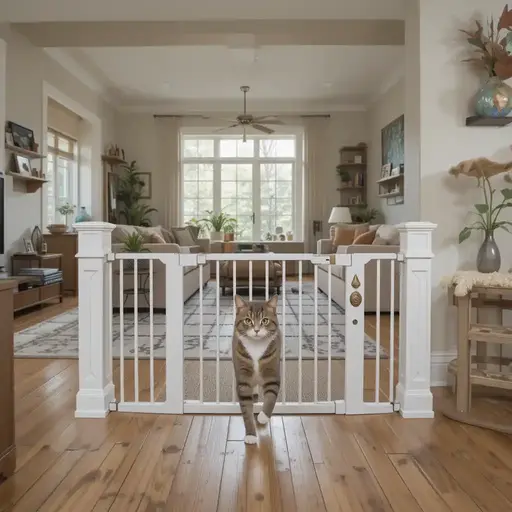
Day 7 – Gradual House Freedom & Long‑Term Success
The final day is about expanding territory responsibly, not opening every door at once.
Signs the Cat Is Ready for Full‑House Access
- Litter consistency – no accidents for 72 hours across all boxes used.
- Calm exploration – slow blinking, upright tail when peeking into new rooms.
- Stable appetite & sleep – eating regularly, sleeping >12 hours, no prolonged hiding.
- No escape attempts – interior doors remain undisturbed for 48 hours.
If any sign is missing, pause expansion and revert to the previous safe room for 24 hours.
Step‑by‑Step Room Expansion Checklist
| Step | Action | Timing |
|---|---|---|
| Morning | Unlock the adjacent room before sunrise. | Day 7 |
| Afternoon | Place a familiar blanket or toy in the new space. | Same day |
| Evening | Conduct a 10‑minute interactive play session in the new room. | Same day |
| Night | Keep the door closed but run a pheromone diffuser inside. | Overnight |
Monitor for subtle stress cues (flattened ears, excessive grooming near thresholds). If observed, retreat one step and repeat until the cat adapts.
Preventing Future Escape Attempts
- Two‑step entry systems: a baby gate followed by the main door forces the cat to pause.
- Vestibule buffer zone: a 3 × 3‑ft mesh enclosure with perches and toys between the interior and exterior doors reduces escapes by 89 % (Cornell Feline Health Center).
- Treat‑at‑door technique: when the door opens, toss a high‑value treat away from the exit. The cat learns that staying inside yields rewards.
Caution: Never punish an escape attempt; punishment creates negative associations with you, not the behavior. Use motion‑activated deterrents outside the door if needed.
Long‑Term Enrichment Roadmap
- Weekly “new territory” rotation – introduce a different room every 7 days for the first month.
- Seasonal window perches – adjust placement to follow bird migration patterns, keeping the view fresh.
- Monthly “scent walks” – hide fresh herbs or grass clippings in treat puzzles to replicate outdoor aromas.
These practices keep the indoor environment dynamic, satisfying the cat’s roaming instinct without the dangers of outdoor life.
Common Pitfalls & How to Fix Them
| Pitfall | Why It Happens | Fix |
|---|---|---|
| Rushing the confinement period | Cats need time to grieve the loss of their territory. | Keep the cat in the starter room for at least 48 hours before expanding. |
| Using scented litter | Cats need time to grieve the loss of territory. | Stick with unscented, fine‑grain clay or mixed soil litter. |
| Leaving windows unsecured | Outdoor cats can leap out if they see prey. | Install pet‑rated guards and keep screens latched. |
| Punishing escape attempts | Leads to fear and increased attempts. | Use positive reinforcement and treat‑at‑door techniques. |
| Neglecting mental stimulation | Boredom triggers destructive behavior. | Rotate toys, provide puzzle feeders, and maintain window perches. |
Addressing these issues early prevents regression and keeps the Transition An Outdoor Cat to an Indoor process on track.
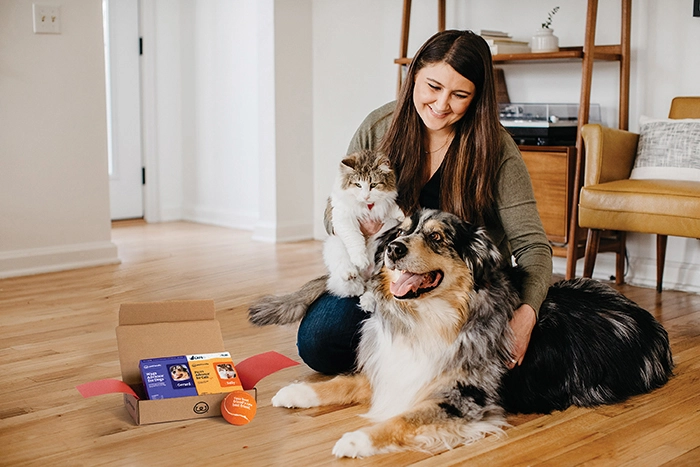
FAQs
How long does the whole process usually take?
Most cats settle into indoor life within 2–4 weeks, with the critical learning phase occurring in the first 3 days. Consistent routines and enrichment accelerate adaptation.
Will my cat miss the outdoors and become depressed?
Providing ample mental and physical stimulation—hunt‑style toys, window views, and varied territory—greatly reduces depressive behaviors. Cats adapted to enriched indoor environments often show lower stress hormones than outdoor cats.
My cat keeps scratching the front door. What should I do?
Place a tall scratching post or sisal-covered board near the door, and reward the cat for using it. Combine this with treat‑at‑door reinforcement to teach the cat that staying inside brings rewards.
Can senior cats handle this transition?
Older cats usually adapt faster because they have established routines. Make sure the starter room is easily accessible (no high jumps) and provide soft bedding to accommodate joint sensitivities.
Do I need to change my cat’s diet after moving indoors?
Indoor cats burn fewer calories, so a high‑protein, low‑carb diet is ideal. Transition gradually using puzzle feeders to prevent rapid weight gain and to keep the cat mentally engaged.
Conclusion
A thoughtful Transition An Outdoor Cat to Indoor plan protects your feline from outside hazards while honoring its instinctual needs.
By following this 7‑day roadmap—starting with a vet check, creating a secure starter room, enriching the environment, building consistent routines, and expanding territory gradually—you’ll give your cat a safe, stimulating home it chooses to stay in.
Begin today: set up a quiet room, schedule that veterinary visit, and watch your cat’s confidence grow one paw‑step at a time.


